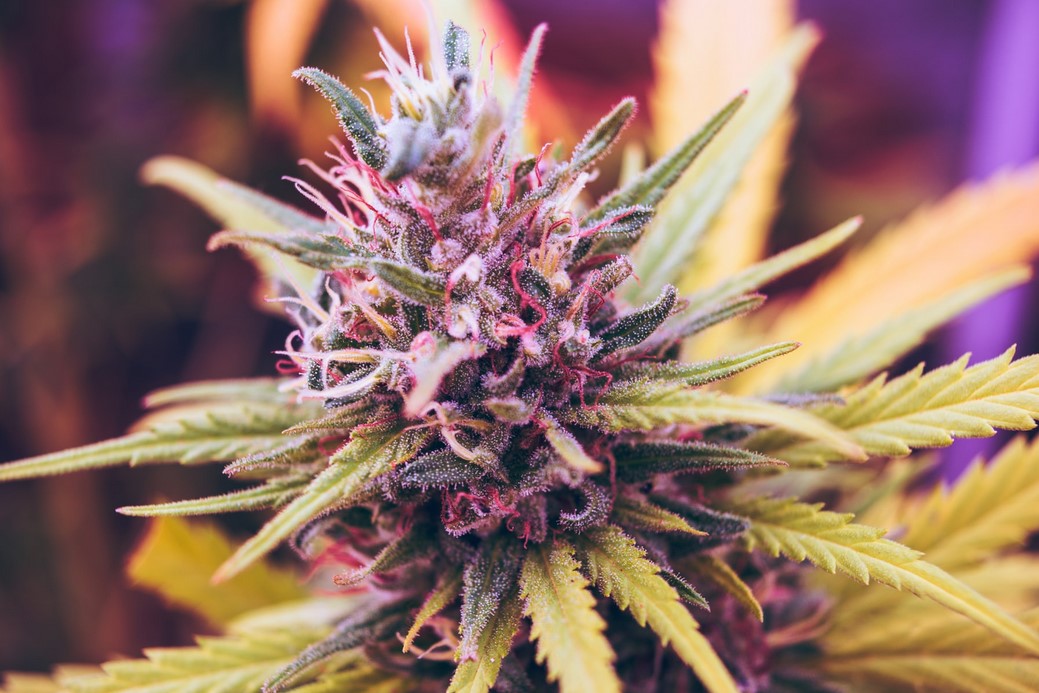Uncategorized
Plant Growth Regulators: What Are PGRs
PGRs (plant growth regulators) are popular in the cannabis industry, but their effects on humans, the Earth, and cannabis buds are often unknown. In this article, we explore PGRs and their potential implications.
Although plant growth regulators (PGRs) can be beneficial to farmers by increasing bud size and yield, these chemicals are also known to harm the environment. PGRs work by manipulating plant hormones in order to accelerate processes that promote growth. However, this same process might be dangerous for humans. In this article, learn more about how PGRs function as well as how you can identify weeds grown with these controversial molecules.
What Are PGRs in Weed?
PGRS are molecules that help regulate plant growth and development. Some of these chemicals occur dividends in plants, driving crucial physiological processes. Still, humans have also been able to engineer synthetic PGRS successfully which are then used increases harvests and the postharvest storage life quality of fruits.
Commercial cannabis growers have, understandably, taken an interest in using plant growth regulators (PGRs). PGRs have helped other fruit-bearing crops, so it’s possible that they could help with bud size and weight at harvest time–leading to increased profits. But what does this mean for consumers?
PGRs, including herbicides and pesticides, are commonly used in the cannabis industry–especially in North America. Although many studies have discovered residue on products meant to be consumed by humans, there is still much unknown about PGRs.
Consumers are gravitating towards organic, sustainable, and artisan cannabis products that are free from synthetic inputs and grown on a smaller scale. Some research suggests water pipes and bongs help remove some harmful chemicals, but the idea of any contaminants doesn’t sit well with many cannabis users.
PGRs are also applied to food crops, such as apples. Farmers use different chemicals to change the shape of apples or prevent them from dropping early. However, many store-bought foods contain pesticide residues. Just because a chemical can help with growth does not mean it is safe for human ingestion.
Get to know PGRs on a deeper level with the information below. After learning about how they work in plants, you’ll be able to determine if they pose any danger and identify weed grown with PGRs.

The Role of PGRs in Plants
Plant growth regulators (PGRs) are chemicals that, similar to how animal hormones regulate physiological events, drive plant growth, flowering and fruiting. However, while in animals circulating hormones enter systemic circulation to effect distant organs and glands; in plants the opposite is true. Plant hormones produce effects where they’re synthesised. Therefore these chemicals work independently as well as together to create desired responses.
The main PGRs found naturally in plants include:
Abscisic acid is a plant growth regulator that helps close stomata, which are small pores on the surface of leaves. By regulating the movement of gases in and out of leave, closing these holes allows plants to conserve water during times of drought. Abscisic acid also helps with abscission—the natural detachment dead leaves and fruits from branches.
Ethylene: This plant hormone causes leaves and flowers to wilt. Ever notice how a tomato turns red when it’s left sitting on the windowsill? Ethylene is responsible for helping fruit ripen once it’s been picked from the tree. Gibberellin: This chemical helps with germination. As germination starts, enzymes produce gibberellin in its active form. The chemical molecule Auxin has several key roles in plant growth, including the regulation of sexual expression and hermaphroditism in numerous species, as well as the formation of root cells. Cytokinin is a Plant Growth Regulator (PGR) that also plays an important role in plant development.
Why Do Growers Use PGRs on Cannabis?
In the end, PGRs are applied by farmers to produce larger and denser buds. Although they may be pretty to look at, these visual aspects come with a price tag. By applying PGRs, it’s similar to changing a plant’s hormones artificially since they work in part by breaking down or starting DNA transcription proteins. Proteins that either activate or suppress genes to promote growth are under the control of hormones. The synthesized, exogenous introduction of these hormones allows growers to disrupt this natural process. By adding tailor-made target proteins that express transcriptional activity, growers can create more transcription proteins for accelerating growth while suppressing those that naturally put on the brakes.
Thanks to this method, your plants will have bigger, healthier-looking buds. The reason being is that growth-promoting genes make cells absorb more water which then causes them to expand. In addition, a type of plant hormone known as auxin makes cell walls grow thicker.
However, despite bigger buds, playing around with plant hormones comes with a serious downside to cannabis growers; compared to normal flowers, PGR weed features lower levels of cannabinoids and terpenes. As such, these buds are much less tasty than those that don’t undergo treatment and produce less in the way of psychoactive effects.

Are PGRs Dangerous?
Research is being conducted to determine the consequences PGRs might have on human health. Even though PGRs are legal for agricultural purposes in certain countries, they are banned in others. As an example, while European farmers can use daminozide as a pesticide, it’s categorized as a probable carcinogen in the United States and still illegal to use on crops.
Chlormequat chloride
This molecule, while beneficial to crops, can cause nausea and lung irritation in humans. In high doses, it can damage the liver.
Daminozide
Though daminozide is excellent for agricultural use – providing enhanced growth to fruits such as peaches, cherries, prunes, and pears – it may be carcinogenic to humans. This according to the Pesticide Properties DataBase published by the University of Hertfordshire.
Paclobutrazol
This plant growth-inhibiting chemical suppresses gibberellin, thereby reducing internodal spacing to create stouter plants that yield earlier fruit harvests. However, researchers have found that the molecule induces reproductive and developmental defects in animal models.
How PGRs Impact the Environment
PGRs are not only a possible danger to those who use cannabis. When these chemicals are used on an industrial level, they eventually end up in the environment–just like pesticides and other materials.
Soil conservation is vital to preventing pollution from runoff and erosion. These chemicals can contaminate groundwater, rivers, and other ecosystems if we don’t take care of the soil. The long-term effects of this pollution are unknown, but research suggests that PGRs can affect organ development in some fish species and cause toxic effects on animal reproductive systems.
How to Identify PGR Weed
While you can find weed contaminated with plant growth regulator (PGR) in many places, it is especially rampant in regions where cannabis is illegal and unmonitored. But how can consumers tell the difference between these tainted buds and clean ones? There are several typical characteristics; however, not all PGRs are poisonous. Some naturally-occurring compounds such as kelp or chitosan generate crops that look comparable to synthetically improved plants, without involving any toxic byproducts. Thus, when coming across flowers exhibiting these traits you should take into account your source and their level of reliability:
- Dense buds: PGR weed is often revised to look natural and feel more teaspooned. With some growers, this may include density in their flowers; however, PGR buds usually appear unnaturally thick. They weigh heavier in the hand and are difficult to break apart without using fingers. Unnatural hormone hacking produces this result of extremely dense cannabis buds that seem larger than average-size nugs.
- Reduced aroma: PGRs might make flowers larger, but they also reduce the flower’s terpene profile, making the aroma less potent. In other words, you would have to put your nose right up against the flower to detect its light scent of earthiness.
- Dark colouration: PGR weed is significantly darker in color, almost brown. In addition, it has less of a sparkle because there are fewer trichomes (the glands that produce cannabinoids and terpenes).
PGRs: A Reason to Grow Your Own or Shop Wisely
There’s a lot of weed available, and a significant amount of it consists of PGRs. But this doesn’t need to be seen as negative. Even though we don’t advise smoking PGR weed because there is little safety data surrounding it, these contaminants make people think twice before buying cannabis. As a result, they are more likely to purchase organically grown buds from small businesses in legal markets or grow their own at home.
The more we educate ourselves about the possible risks associated with the cannabis industry, the easier it becomes to make informed decisions.


